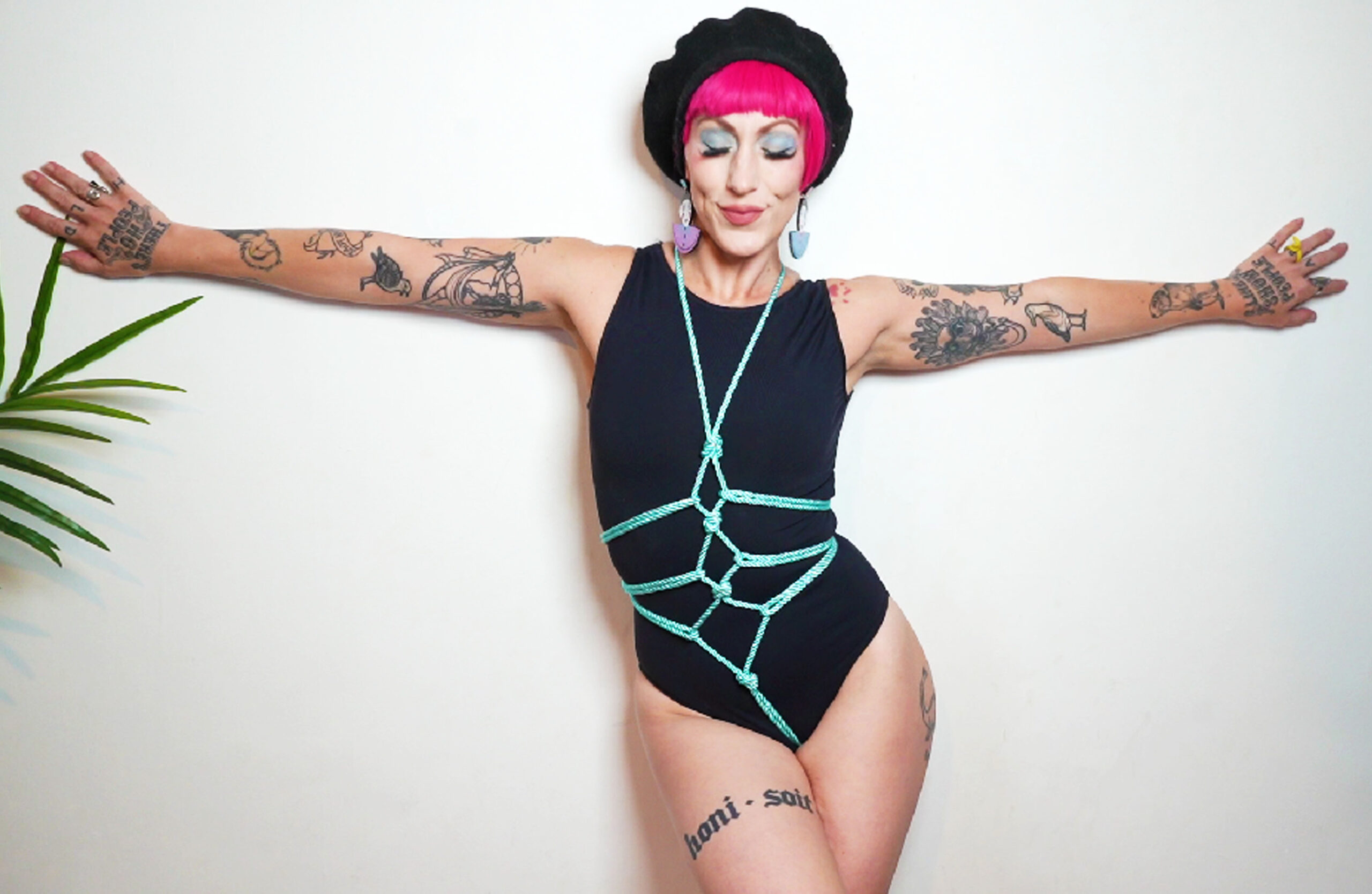Understanding Different Perspectives
Understanding different perspectives is crucial when navigating any relationship, particularly one involving differing gender identities.
Social conditioning plays a powerful role in shaping our understanding of gender, often leading to ingrained biases and assumptions.

From a young age, we are exposed to societal norms and expectations regarding gender roles, behaviors, and expressions. This constant exposure can create deeply held beliefs that may not always align with an individual’s own gender identity.
For instance, traditional gender stereotypes might lead someone to assume that a transgender person who presents in a way that aligns with their affirmed gender is “playing a role” or “pretending.”
These assumptions can be hurtful and invalidating, hindering genuine understanding and connection.
Recognizing the impact of social conditioning is the first step towards dismantling these harmful biases.
It requires actively challenging our own preconceived notions and engaging in open-minded dialogue with those whose experiences differ from our own.
Listening to and believing transgender individuals’ lived experiences is essential for fostering empathy and respect.
Learning about the diverse spectrum of gender identities and expressions can broaden our understanding and challenge rigid definitions.

Remember, gender identity is a deeply personal aspect of who someone is.
Approaching relationships with an open heart and a willingness to learn fosters genuine connection and respect for all individuals, regardless of their gender identity.
Understanding different perspectives is crucial when navigating any relationship, especially one involving differing gender identities. It requires empathy, active listening, and a willingness to step outside one’s own lived experiences.
Internalized transphobia refers to the internalization of negative societal attitudes and beliefs about transgender individuals by transgender people themselves. This can manifest in various ways, such as self-hatred, shame, fear, and even discrimination against other transgender people.
Here are some challenges posed by internalized transphobia in relationships:
-
Difficulty accepting one’s own gender identity: Internalized transphobia can make it challenging for a person to fully embrace and affirm their true gender identity. This can lead to confusion, anxiety, and doubt within the relationship.
-
Fear of rejection or judgment from others: Individuals struggling with internalized transphobia may fear that their partner or loved ones will not accept them for who they are. This fear can create distance and prevent open communication.
-
Self-sabotaging behaviors: To avoid potential hurt or rejection, a person might engage in self-sabotaging behaviors within the relationship, such as downplaying their identity or avoiding discussions about gender.
-
Unrealistic expectations: Internalized transphobia can lead to unrealistic expectations of oneself and one’s partner. The individual might expect immediate acceptance and understanding, which can set both parties up for disappointment.
It is important to remember that internalized transphobia is a deeply personal struggle. Overcoming these challenges often requires seeking support from therapists, support groups, or other trusted individuals who understand the complexities of transgender experiences.
Open and honest communication between partners is essential for navigating these complexities. Creating a safe and supportive environment where both individuals feel comfortable expressing their feelings and needs can foster understanding and strengthen the relationship.
Understanding different perspectives is fundamental to navigating any relationship, but it becomes even more crucial when dealing with differences in gender identity.
It requires empathy, open-mindedness, and a willingness to learn about experiences outside one’s own.
Here’s how education can play a vital role in embracing growth and understanding within such relationships:
-
Educate Yourself: Begin by learning about gender identity, transgender experiences, and the challenges faced by the LGBTQ+ community. Reliable resources include The Trevor Project, GLAAD, and the Human Rights Campaign.
-
Active Listening: Create a safe space for open and honest communication. Listen attentively to your partner’s experiences, feelings, and perspectives without judgment.
-
Use Preferred Names and Pronouns: Respect your partner’s chosen name and pronouns. This simple act demonstrates acknowledgement and validation of their identity.
-
Challenge Internal Biases: We all have unconscious biases. Be aware of your own preconceived notions about gender and actively challenge them. Reflect on how societal norms might influence your understanding.
-
Celebrate Differences: Recognize that gender identity is a spectrum, and there is no single “right” way to be transgender. Embrace the uniqueness of your partner’s experience.
-
Seek Support: Don’t hesitate to seek guidance from therapists or counselors specializing in LGBTQ+ relationships. They can provide valuable support and strategies for navigating challenges.
Remember, understanding and embracing different perspectives is an ongoing process. It requires patience, compassion, and a commitment to personal growth.
Communication is Key
Communication is undeniably the cornerstone of any successful relationship, but it takes on heightened significance when navigating the complexities of a relationship with someone who has a different gender identity.
This journey often involves unlearning societal norms and biases, fostering understanding and empathy, and creating a space where both individuals feel seen, heard, and respected.
Active listening emerges as a powerful tool in this process.
Active listening is more than just passively hearing words; it’s about fully engaging with the speaker, demonstrating genuine interest, and seeking to understand their perspective on a deeper level.
When interacting with someone whose gender identity differs from societal expectations, active listening can help bridge communication gaps and build stronger connections.
It involves paying close attention not only to what is being said but also to how it is being said – the tone of voice, body language, and emotional nuances.
Resisting the urge to interrupt or offer solutions prematurely allows space for the speaker to express themselves authentically.
Reflecting back what you hear demonstrates that you are truly listening and processing their message.
Phrases like “It sounds like you’re feeling…” or “I understand that this is important to you because…” can validate their experiences and foster a sense of being heard.
Asking clarifying questions shows your willingness to delve deeper into their thoughts and feelings without judgment.
For example, instead of assuming someone’s pronouns, you could politely ask, “What pronouns do you use?”
This simple act demonstrates respect and creates an inclusive environment where individuals feel comfortable being themselves.
Active listening requires patience, empathy, and a genuine desire to understand.
It is a continuous process that strengthens relationships by fostering trust, intimacy, and mutual respect – essential elements in navigating the complexities of any relationship, particularly those involving differences in gender identity.
Communication is paramount in any relationship, but especially when navigating differences in gender identity.

Open and honest dialogue allows both parties to express their feelings, needs, and expectations clearly.
It provides a space for understanding, empathy, and growth.
Active listening is crucial: truly hearing and acknowledging what the other person is saying, even if it’s difficult or unfamiliar.
This involves paying attention to both verbal and nonverbal cues, asking clarifying questions, and reflecting back what you hear to ensure understanding.
Respectful language is essential for fostering a safe and inclusive environment.
Using a person’s correct name and pronouns demonstrates basic respect and validates their gender identity.
It can feel validating and affirming for someone to be addressed as they identify, contributing to feelings of safety and belonging.
Misgendering, or using the wrong pronouns, can be deeply hurtful and invalidating.
While mistakes may happen, it’s important to apologize sincerely and correct yourself promptly.
Making an effort to learn and use the correct pronouns demonstrates respect and commitment to building a positive relationship.
Education and awareness are ongoing processes.
If you’re unsure about someone’s pronouns or gender identity, it’s always best to politely ask.
Phrasing it as “What pronouns do you use?” shows respect and avoids making assumptions.
Creating a space where questions can be asked openly and honestly encourages learning and understanding.
Effective communication is paramount when navigating any relationship, but it becomes especially crucial when interacting with someone whose gender identity differs from your own. Creating a safe space for open and honest dialogue can foster understanding, empathy, and strengthen the bond between individuals.
Firstly, active listening is essential. Pay undivided attention when your partner speaks, seeking to understand their perspective rather than formulating a response. Use verbal cues like “I hear you” or “Tell me more” to demonstrate engagement and encourage them to share their thoughts and feelings openly.
Employing respectful language is equally important. Use the pronouns and name that align with your partner’s gender identity. Avoid using outdated or offensive terminology, as it can be hurtful and disrespectful. If unsure about appropriate language, respectfully ask for guidance rather than making assumptions.
Creating a judgment-free zone is vital for fostering open communication. Refrain from interrupting, criticizing, or dismissing your partner’s experiences. Validate their feelings and create an environment where they feel comfortable expressing themselves without fear of judgment or rejection.
Be patient and understanding. Learning about different gender identities can take time and effort. Approach the process with curiosity and a willingness to learn. Be prepared for questions and uncertainties, and address them with respect and openness.
Remember that communication is a two-way street. Share your own thoughts and feelings in a clear and respectful manner, creating an opportunity for mutual understanding. Be willing to compromise and find solutions that work for both parties.
Cultivating empathy is crucial. Strive to understand your partner’s experiences from their perspective. Put yourself in their shoes and try to see the world through their eyes. This can help you build a stronger connection and foster deeper understanding.
Regular check-ins are important for maintaining open communication. Set aside dedicated time to discuss your relationship, share concerns, and address any issues that may arise. This creates a space for ongoing dialogue and strengthens the foundation of your bond.
Seeking external support can be beneficial. If you encounter challenges communicating with your partner or navigating their gender identity, consider seeking guidance from a therapist or counselor specializing in LGBTQ+ relationships.
Building a Supportive Relationship
Building a supportive relationship when partners have differing gender identities requires a deep commitment to understanding, acceptance, and affirmation. It’s about creating a space where both individuals feel safe, respected, and celebrated for who they truly are.
One crucial aspect is fostering open and honest communication. Encourage your partner to share their experiences, feelings, and needs related to their gender identity. Actively listen without judgment, seeking to understand their perspective even if it differs from your own.
Educate yourself about gender identity and the challenges transgender individuals may face. This can help you better empathize with their experiences and provide more informed support. Resources like The Trevor Project or GLAAD offer valuable information and guidance.
Respect your partner’s chosen name and pronouns. Using the correct name and pronouns is fundamental to affirming their gender identity and showing respect for who they are.
Be mindful of language and avoid making assumptions about their gender expression or experiences. Use inclusive language that recognizes the diversity of gender identities.
Celebrate your partner’s achievements and milestones, acknowledging their journey and progress in embracing their true self. Offer encouragement and support during challenging times.
Be an ally to your partner by speaking up against discrimination or prejudice they may encounter. Stand alongside them and challenge harmful stereotypes or assumptions.
Remember that building a supportive relationship is an ongoing process. It requires patience, understanding, and a willingness to learn and grow fake pussy together. By creating a space of love, acceptance, and affirmation, you can nurture a strong and fulfilling partnership where both individuals can thrive.
Building a supportive relationship with someone who has a different gender identity requires understanding, empathy, and a commitment to open communication.
Here are some key aspects to consider:
-
**Respect their Identity:** The most fundamental aspect is respecting their *gender identity* . Use their chosen name and pronouns consistently. Avoid making assumptions about their gender expression or experiences.
-
**Educate Yourself:** Take the time to learn about transgender identities, issues, and terminology. Reliable resources include The Trevor Project, GLAAD, and the Human Rights Campaign.
-
Active Listening: Create a safe space where your partner feels comfortable sharing their feelings, thoughts, and challenges without judgment. Listen attentively and validate their experiences.
-
**Challenge Your Own Biases:** Everyone holds unconscious biases. Be aware of your own preconceived notions about gender and work actively to challenge them.
Navigating family and social expectations can be particularly complex.
-
Open Communication with Family:** Talk to your loved ones about your partner’s gender identity. Share resources and educate them in a respectful manner.
-
Setting Boundaries: Establish clear boundaries with family members who are disrespectful or unaccepting. It’s okay to limit their contact if necessary to protect your partner’s well-being.
-
Finding Support Networks: Connect with other LGBTQ+ individuals and families through support groups, online communities, or local organizations. Sharing experiences and advice can be invaluable.
Remember that building a supportive relationship takes time, effort, and ongoing dialogue. Celebrate your partner’s identity, advocate for their rights, and create a loving and affirming environment.
Building a supportive relationship with someone of a different gender identity requires understanding, empathy, and open communication.
Start by educating yourself about transgender identities and experiences. Familiarize yourself with terminology like gender identity, gender expression, and pronouns. This knowledge will help you understand their perspective and avoid making unintentional mistakes.
Listen actively to your partner and respect their identity. Validate their feelings and experiences, even if they differ from your own. Creating a safe space where they feel heard and understood is crucial.
Use their correct name and pronouns consistently. This demonstrates respect and affirms their gender identity. If you make a mistake, apologize sincerely and correct yourself.
Be patient and understanding. Adjusting to a new relationship dynamic takes time. Be prepared for questions and conversations about gender identity. Answer honestly and openly, and be willing to learn from your partner.
Support their social transition, if they choose to have one. This might include helping them update legal documents or supporting them in coming out to family and friends.
Be an advocate for your partner. Challenge discrimination and prejudice that they may face. Stand up for their rights and create a supportive environment for them.
Celebrate their individuality. Appreciate their unique qualities and experiences. Remember, gender identity is just one aspect of who they are.
Seek professional guidance if needed. Couples therapy can provide a safe space to navigate challenges and build a stronger relationship.
Building a supportive relationship with someone who has a different gender identity requires understanding, empathy, and a willingness to learn and grow together.
Start by educating yourself about transgender identities and experiences. This can involve reading books, articles, and online resources from reputable sources. Engaging with transgender individuals and communities can also provide valuable insights and perspectives.
Active listening is crucial for creating a safe and supportive environment. Pay attention to your partner’s feelings, thoughts, and needs. Avoid interrupting or dismissing their experiences. Validate their emotions and let them know that you are there to listen without judgment.
Respect your partner’s chosen name and pronouns. Using the correct name and pronouns is fundamental to affirming their identity and showing respect. It may take time to adjust, but make a conscious effort to get it right.
Be patient and understanding. Transitioning can be a complex and challenging process. There may be ups and downs along the way. Offer your support and encouragement throughout this journey.
Celebrate milestones and achievements. Acknowledge your partner’s progress and celebrate their successes. This demonstrates your pride in them and strengthens your bond.
Avoid making assumptions or generalizations about transgender individuals. Every person’s experience is unique, so resist stereotypes and treat your partner as an individual.
Seek professional support when needed. Couples therapy can provide a safe space to discuss challenges, improve communication, and strengthen your relationship. A therapist specializing in gender identity issues can offer guidance and support tailored to your situation.
Remember that building a strong and supportive relationship takes time and effort. By committing to understanding, empathy, and open communication, you can foster a loving and affirming partnership.
See the full post online
Check out what’s fully covered
- Retinol Peel Near Norwood, Surrey - November 5, 2025
- Redensity 1 Skin Booster Treatments Near Okewood, Surrey - October 31, 2025
- Redensity 1 Skin Booster Treatments Near Capel, Surrey - October 28, 2025
